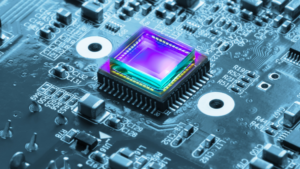What is AI-Enhanced Network (AIEN)?

An AI-enhanced Network (AIEN) is a forward-looking technological framework that merges the capabilities of artificial intelligence (AI) with traditional network infrastructure.
This synergy aims to optimize network performance, efficiency, and management by employing AI algorithms for tasks like real-time monitoring, predictive analysis, and automated decision-making. AIENs possess the flexibility to adapt to ever-changing network conditions, identify trends, detect anomalies, and proactively tackle potential issues before they escalate.
This innovative approach not only bolsters network reliability and speed but also empowers network administrators and organizations to make well-informed decisions, resulting in enhanced user experiences and operational efficiency.
Components of AI-Enhanced Networks:
- Predictive Analytics: AI algorithms can analyze historical data and ongoing network performance to predict potential issues, allowing for proactive maintenance and optimization.
- Automated Configuration and Management: AI can automate routine network configuration tasks, adjustments, and maintenance activities, reducing the risk of human error and freeing up IT staff for more complex tasks.
- Intelligent Security: By leveraging AI for threat detection and response, networks can identify and mitigate security threats in real-time, adapting to new risks as they emerge.
- Traffic Optimization: AI algorithms can optimize network traffic flow, ensuring efficient data transfer, reducing latency, and improving user experiences.
- Fault Detection and Resolution: AI can continuously monitor network health, quickly identifying and diagnosing issues, sometimes resolving them automatically or with minimal human input.
- Resource Allocation: AI can dynamically allocate network resources based on demand, ensuring optimal performance across different nodes and reducing wastage.
Benefits of AI-Enhanced Networks:
- Enhanced Efficiency: Automation of routine tasks and optimization of network resources lead to a more efficient network operation.
- Improved Performance: Real-time analytics and adaptive resource management ensure high network performance, meeting the demands of modern applications.
- Increased Security: Advanced threat detection and adaptive security measures protect against a wide array of cyber threats.
- Reduced Downtime: Predictive maintenance and quick fault resolution contribute to higher network uptime and reliability.
- Cost Savings: Through automation, efficient resource use, and reducing the need for extensive manual intervention, AI-enhanced networks can lead to significant cost savings.
Here’s why AI-enhanced networks are important:
- Efficiency and Optimization: AI processes real-time data to make intelligent decisions, enhancing resource utilization, minimizing downtime, and elevating user experiences.
- Predictive Maintenance: AI predicts and prevents network disruptions, enabling proactive maintenance essential for critical infrastructure like telecommunications and industrial networks.
- Network Security: AI combats cybersecurity threats in real time, adapting to evolving attack patterns and reducing breach risks through enhanced detection and mitigation.
- Personalization: AI analyzes user behavior for tailored network experiences and services, delivering personalized content and services.
- 5G and IoT: AI manages complex connections, data flows, and quality of service requirements presented by 5G networks and the IoT landscape.
- Traffic Management: AI optimizes data traffic flow, ensuring smooth transmission through dynamic rerouting based on congestion levels.
- Resource Allocation: AI dynamically allocates network resources based on demand, prioritizing critical applications.
- Network Planning: AI aids network design, expansion, and cost reduction by analyzing data for optimal infrastructure placement and capacity predictions.
- Real-time Insights: AI offers instant insights into network performance and user behavior, enabling swift, informed decision-making.
- Remote Management: AIEN permits remote management and automated network tasks, minimizing operational costs and on-site interventions.
- Data Analysis: AI processes vast network data for pattern identification, trend analysis, and improvement opportunities.
- Scalability: AI manages the complexity of expanding networks, ensuring effective operations as networks grow larger and more intricate.
What are Other Terms for AI-enhanced Networks (AIEN)?
- Intelligent Network
- AI-Powered Network
- Smart Network
- Cognitive Network
- Network Automation with AI
- AI-Driven Networking
- Adaptive Networking
- Network Intelligence
- AI-Integrated Network
- Neural Network (though this might be confused with a different type of AI technology)
Why are AI-enhanced Networks (AIEN)? important?
AI-enhanced networks (AIEN) are pivotal due to their ability to transform industries and daily life. By leveraging artificial intelligence, these networks optimize performance, predict and prevent issues, bolster security, and personalize services.
They’re crucial for the 5G era and the growing IoT landscape. AIEN ensures efficient traffic management, allocates resources intelligently, aids in network planning, and delivers real-time insights. With remote management capabilities and unmatched data analysis, AIEN streamlines operations, making networks smarter, more adaptable, and scalable for the future.




